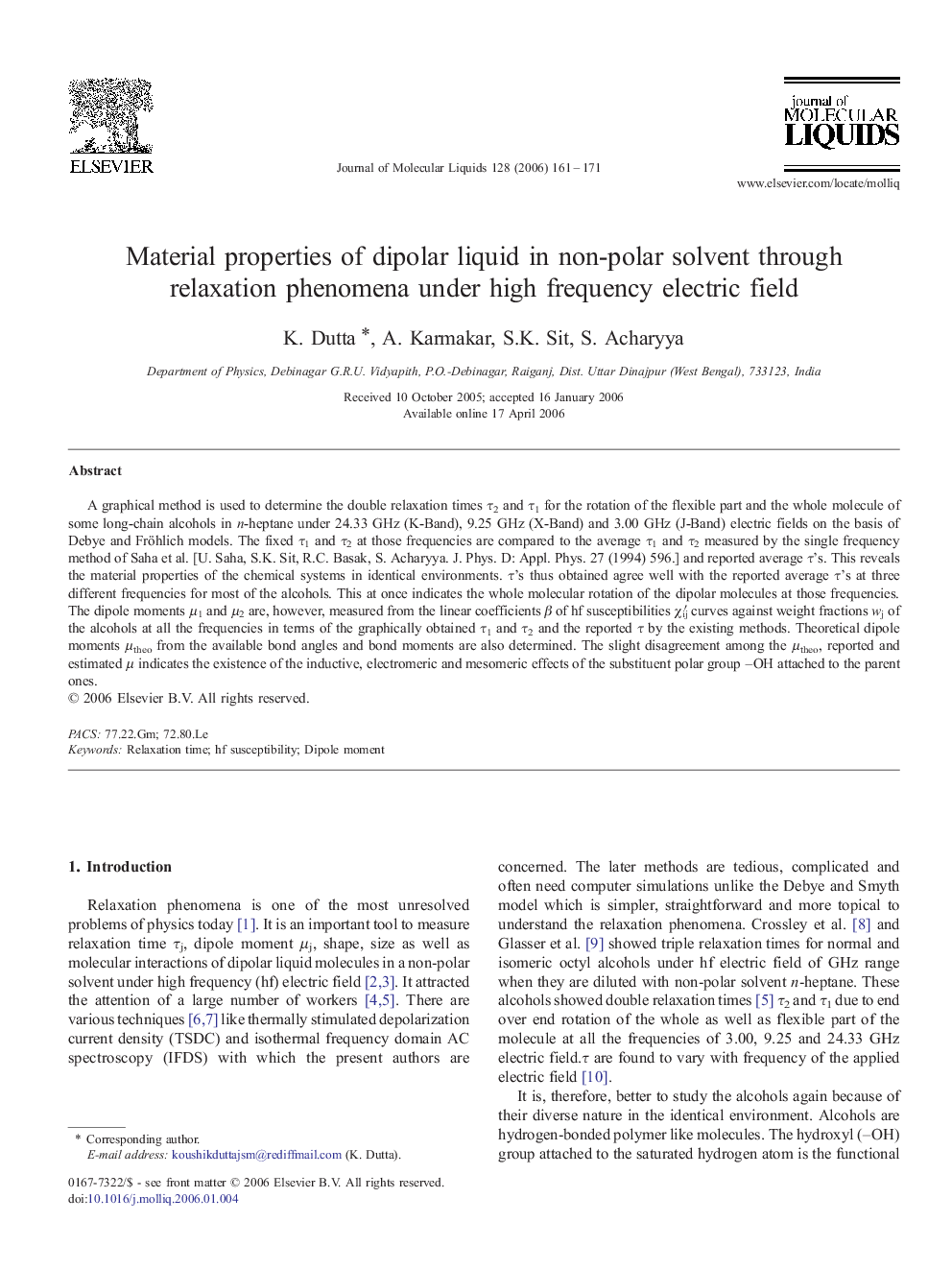| Article ID | Journal | Published Year | Pages | File Type |
|---|---|---|---|---|
| 5413829 | Journal of Molecular Liquids | 2006 | 11 Pages |
Abstract
A graphical method is used to determine the double relaxation times Ï2 and Ï1 for the rotation of the flexible part and the whole molecule of some long-chain alcohols in n-heptane under 24.33 GHz (K-Band), 9.25 GHz (X-Band) and 3.00 GHz (J-Band) electric fields on the basis of Debye and Fröhlich models. The fixed Ï1 and Ï2 at those frequencies are compared to the average Ï1 and Ï2 measured by the single frequency method of Saha et al. [U. Saha, S.K. Sit, R.C. Basak, S. Acharyya. J. Phys. D: Appl. Phys. 27 (1994) 596.] and reported average Ï's. This reveals the material properties of the chemical systems in identical environments. Ï's thus obtained agree well with the reported average Ï's at three different frequencies for most of the alcohols. This at once indicates the whole molecular rotation of the dipolar molecules at those frequencies. The dipole moments μ1 and μ2 are, however, measured from the linear coefficients β of hf susceptibilities Ïijâ² curves against weight fractions wj of the alcohols at all the frequencies in terms of the graphically obtained Ï1 and Ï2 and the reported Ï by the existing methods. Theoretical dipole moments μtheo from the available bond angles and bond moments are also determined. The slight disagreement among the μtheo, reported and estimated μ indicates the existence of the inductive, electromeric and mesomeric effects of the substituent polar group -OH attached to the parent ones.
Related Topics
Physical Sciences and Engineering
Chemistry
Physical and Theoretical Chemistry
Authors
K. Dutta, A. Karmakar, S.K. Sit, S. Acharyya,
